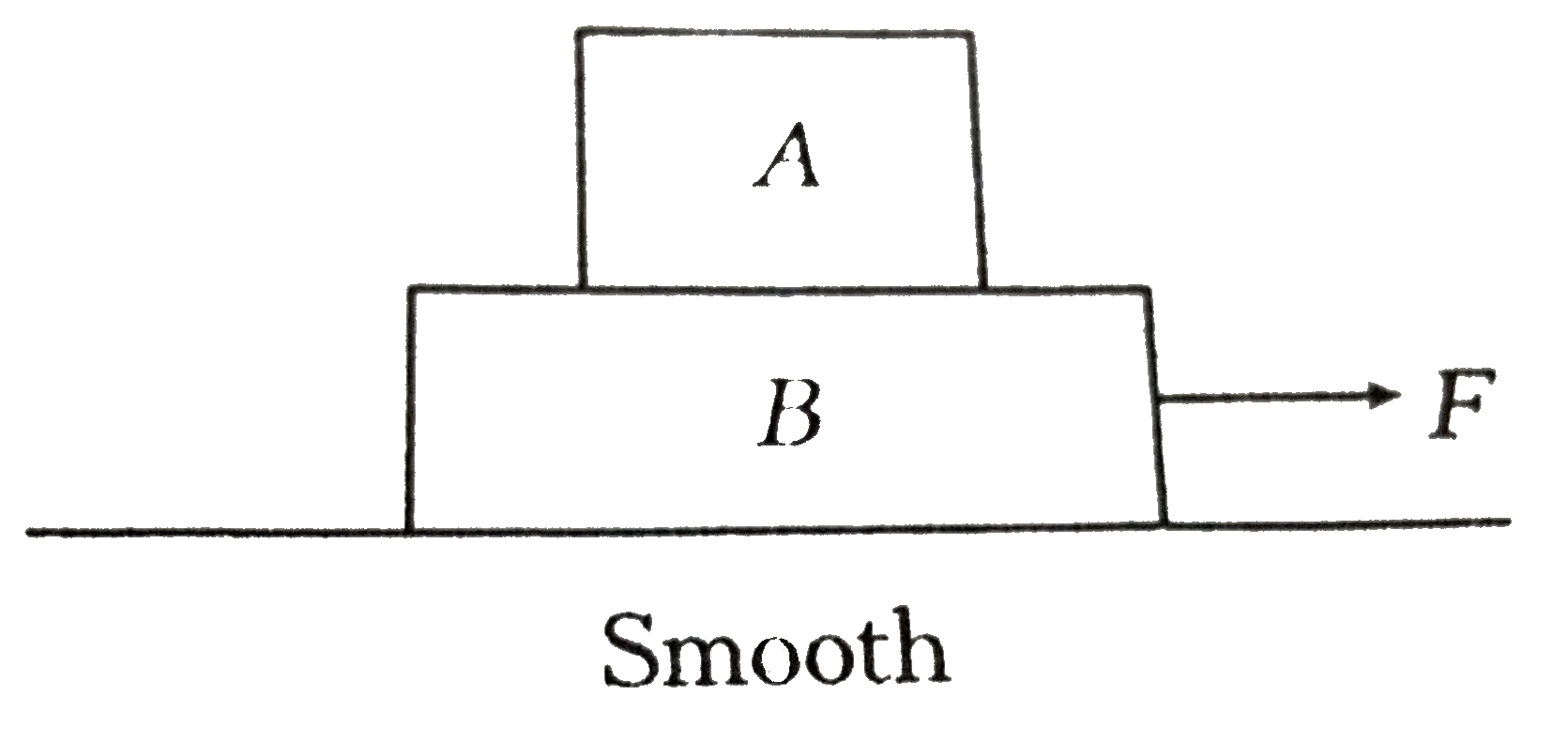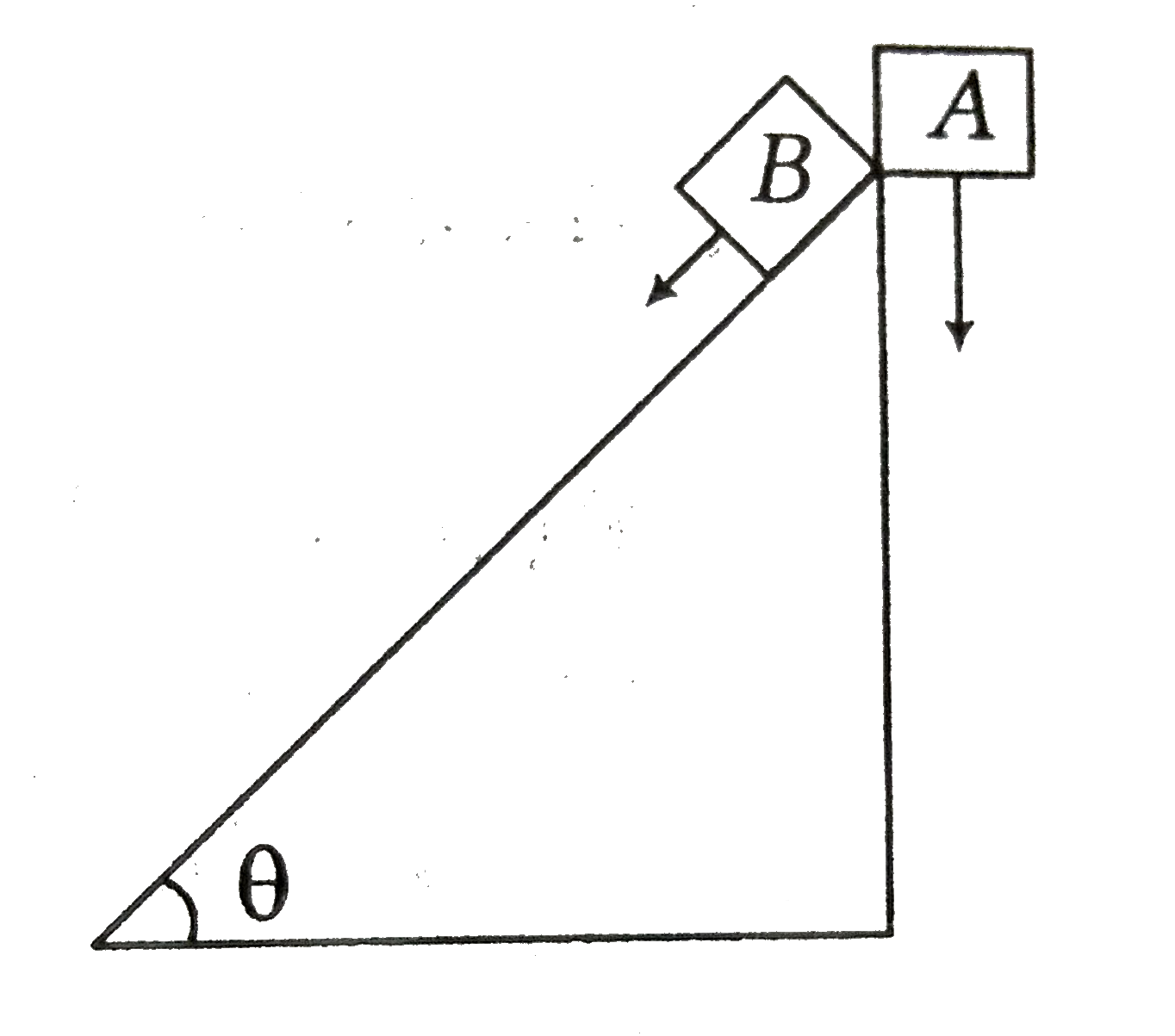These questions consists of two statements each printed as Assertion and Reason. While answering these question you are required to choose any one of the following five reponses
(a) If both Assertion and Reason arecorrect and Reason is the correct explanation of Asserrtion.
(b) If both Assertion and Reason are correct but Reason is not the correct explanation of Assertion.
(c ) If Assertion is true but Reason is false.
(d) If Assertion is false but Reason is true.
Assertion Spring force is a conservative force.
Reason Potential energy is defined only for conservative forces.
The correct Answer is:A
To solve the question, we need to analyze both the Assertion and the Reason provided.
1. Understanding the Assertion:
- The assertion states that "Spring force is a conservative force."
- A conservative force is defined as a force where the work done in moving an object between two points is independent of the path taken. Spring force, which follows Hooke's law, is indeed a conservative force because the work done in compressing or stretching a spring only depends on the initial and final positions, not on the path taken.
2. Understanding the Reason:
- The reason states that "Potential energy is defined only for conservative forces."
- This statement is true. Potential energy is associated with conservative forces, as it represents the stored energy due to the position of an object in a force field (like gravitational or spring force). Non-conservative forces, like friction, do not have a potential energy associated with them because the work done depends on the path taken.
3. Evaluating the Relationship:
- Both the assertion and the reason are correct.
- Furthermore, the reason provides a correct explanation for the assertion. Since potential energy is indeed defined for conservative forces, and since the spring force is a conservative force, the reason supports the assertion.
4. Conclusion:
- Since both the assertion and the reason are correct, and the reason correctly explains the assertion, the correct response is (a).
Final Answer:
(a) If both Assertion and Reason are correct and Reason is the correct explanation of Assertion.
---
- The assertion states that "Spring force is a conservative force."
- A conservative force is defined as a force where the work done in moving an object between two points is independent of the path taken. Spring force, which follows Hooke's law, is indeed a conservative force because the work done in compressing or stretching a spring only depends on the initial and final positions, not on the path taken.
- The reason states that "Potential energy is defined only for conservative forces."
- This statement is true. Potential energy is associated with conservative forces, as it represents the stored energy due to the position of an object in a force field (like gravitational or spring force). Non-conservative forces, like friction, do not have a potential energy associated with them because the work done depends on the path taken.
- Both the assertion and the reason are correct.
- Furthermore, the reason provides a correct explanation for the assertion. Since potential energy is indeed defined for conservative forces, and since the spring force is a conservative force, the reason supports the assertion.
- Since both the assertion and the reason are correct, and the reason correctly explains the assertion, the correct response is (a).
(a) If both Assertion and Reason are correct and Reason is the correct explanation of Assertion.
Topper's Solved these Questions
- WORK, ENERGY AND POWERBOOK - DC PANDEY ENGLISHCHAPTER - WORK, ENERGY AND POWEREXERCISE - MATCH THE COLUMNS
7 Videos
- WORK, ENERGY AND POWERBOOK - DC PANDEY ENGLISHCHAPTER - WORK, ENERGY AND POWEREXERCISE - MEDICAL ENTRACES GALLERY
33 Videos
- WORK, ENERGY AND POWERBOOK - DC PANDEY ENGLISHCHAPTER - WORK, ENERGY AND POWEREXERCISE - EXERCISES(TAKING IT TOGETHER)
83 Videos
- WORK, ENERGY & POWERBOOK - DC PANDEY ENGLISHCHAPTER - WORK, ENERGY & POWEREXERCISE - Level 2 Comprehension Based
2 Videos
- WORK, POWER AND ENERGYBOOK - DC PANDEY ENGLISHCHAPTER - WORK, POWER AND ENERGYEXERCISE - E Integer Type Questions
11 Videos
Similar Questions
These questions consists of two statements each printed as Assertion and Reason. While answering these question you are required to choose any one of the following five reponses
(a) If both Assertion and Reason arecorrect and Reason is the correct explanation of Asserrtion.
(b) If both Assertion and Reason are correct but Reason is not the correct explanation of Assertion.
(c ) If Assertion is true but Reason is false.
(d) If Assertion is false but Reason is true.
Assertion If work done by conservative force is negative, then potential energy associated with that force should increase.
Reason This is according to the relation
ΔU=−W
Here, ΔU is change in potential energy and W is work done by conservative force.
View SolutionThese questions consists of two statements each printed as Assertion and Reason. While answering these question you are required to choose any one of the following five reponses
(a) If both Assertion and Reason arecorrect and Reason is the correct explanation of Asserrtion.
(b) If both Assertion and Reason are correct but Reason is not the correct explanation of Assertion.
(c ) If Assertion is true but Reason is false.
(d) If Assertion is false but Reason is true.
Assertion Total work done by spring may be positive ,negative or zero.
Reason Direction of spring force is always towards mean position.
View SolutionThese questions consists of two statements each printed as Assertion and Reason. While answering these question you are required to choose any one of the following five reponses
(a) If both Assertion and Reason arecorrect and Reason is the correct explanation of Asserrtion.
(b) If both Assertion and Reason are correct but Reason is not the correct explanation of Assertion.
(c ) If Assertion is true but Reason is false.
(d) If Assertion is false but Reason is true.
Assertion . Work done by constant force is equal to magnitude of force multiplied by displacement.
Reason. Work done is scalar quantity. If may be positive, negative or zero.
View SolutionThese questions consists of two statements each printed as Assertion and Reason. While answering these question you are required to choose any one of the following five reponses
(a) If both Assertion and Reason arecorrect and Reason is the correct explanation of Asserrtion.
(b) If both Assertion and Reason are correct but Reason is not the correct explanation of Assertion.
(c ) If Assertion is true but Reason is false.
(d) If Assertion is false but Reason is true.
Assertion In projectile motion, the rate of change in magnitude of potential energy of a particle first decreases and then increases during motion.
Reason In projectile motion, the rate of change in linear momentum of a particle remains constant during motion.
View SolutionThese questions consists of two statements each printed as Assertion and Reason. While answering these question you are required to choose any one of the following five reponses
(a) If both Assertion and Reason arecorrect and Reason is the correct explanation of Asserrtion.
(b) If both Assertion and Reason are correct but Reason is not the correct explanation of Assertion.
(c ) If Assertion is true but Reason is false.
(d) If Assertion is false but Reason is true.
Assertion At any instant the magnitude of rate of change of potential energy of the projectile of mass 1 kg is numerically equal to magnitude of a.v (where a is acceleration due to gravity and v is velocity at that instant)
Reason The graph representing power delivered by the gravitational force acting on the projectile with time will be straight line with negative slope.
View SolutionThese questions consists of two statements each printed as Assertion and Reason. While answering these question you are required to choose any one of the following five reponses
(a) If both Assertion and Reason arecorrect and Reason is the correct explanation of Asserrtion.
(b) If both Assertion and Reason are correct but Reason is not the correct explanation of Assertion.
(c ) If Assertion is true but Reason is false.
(d) If Assertion is false but Reason is true.
Assertion If the surface between the blocks A and B is rough, then work done by friction on block B is always negative.

Reason Total work done by friction in both the blocks is always zero.
View SolutionThese questions consists of two statements each printed as Assertion and Reason. While answering these question you are required to choose any one of the following five reponses
(a) If both Assertion and Reason arecorrect and Reason is the correct explanation of Asserrtion.
(b) If both Assertion and Reason are correct but Reason is not the correct explanation of Assertion.
(c ) If Assertion is true but Reason is false.
(d) If Assertion is false but Reason is true.
Assertion Force applied on a block moving in one dimension is producing a constant power,then the motion should be uniformly accelerated.
Reason This constant power multiplied with time is equal to the change in kinetic energy.
View SolutionThese questions consists of two statements each printed as Assertion and Reason. While answering these question you are required to choose any one of the following five reponses
(a) If both Assertion and Reason arecorrect and Reason is the correct explanation of Asserrtion.
(b) If both Assertion and Reason are correct but Reason is not the correct explanation of Assertion.
(c ) If Assertion is true but Reason is false.
(d) If Assertion is false but Reason is true.
Assertion If a force is applied on a rigid body. Body is in motion but point of application of force is stationary. Then, work done by the force is zero.
Reason If body is moving, then point of application of force should also move.
View SolutionThese questions consists of two statements each printed as Assertion and Reason. While answering these question you are required to choose any one of the following five reponses
(a) If both Assertion and Reason arecorrect and Reason is the correct explanation of Asserrtion.
(b) If both Assertion and Reason are correct but Reason is not the correct explanation of Assertion.
(c ) If Assertion is true but Reason is false.
(d) If Assertion is false but Reason is true.
Assertion An object A is dropped from the top of an incline at t=0, as shown. It will fall under gravity as indicated by the arrow. At the same time, i.e., t=0, another object B begins to slide down the frictionless incline.

The two objects during their motion to the ground level will be travelling at equal speeds.
Reason Net force on both the objects during their motion is same.
View SolutionThese questions consists of two statements each printed as Assertion and Reason. While answering these question you are required to choose any one of the following five reponses
(a) If both Assertion and Reason arecorrect and Reason is the correct explanation of Asserrtion.
(b) If both Assertion and Reason are correct but Reason is not the correct explanation of Assertion.
(c ) If Assertion is true but Reason is false.
(d) If Assertion is false but Reason is true. Assertion A body is moving along X-axis. Force F=−2x2 is acting on it and work done by this force in moving the body from x=-2 to x=-+2 is zero.
Reason From x=-2 to x=0, work done is negative and from x=0 to x=+2, work done is negative.
View Solution
